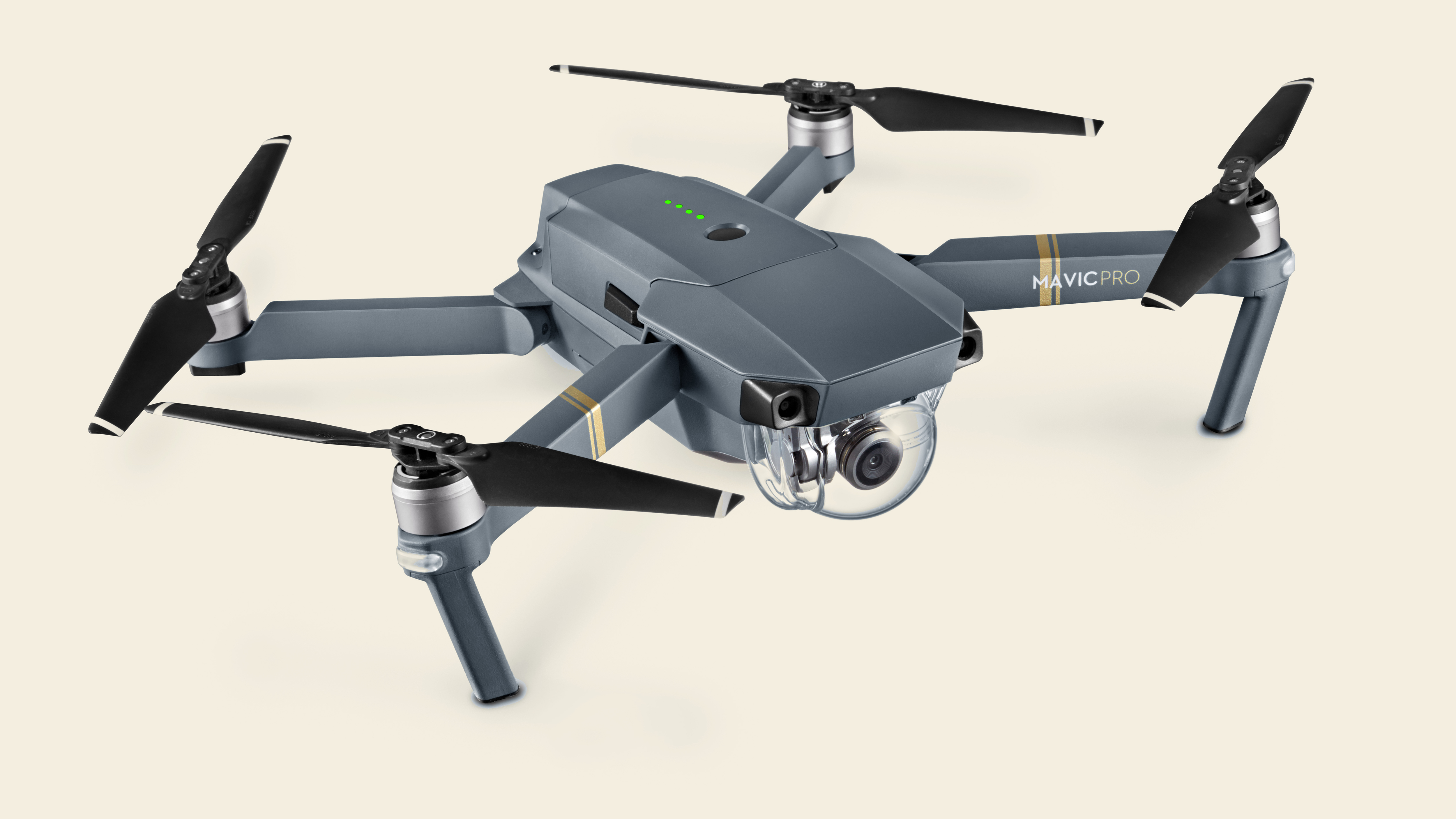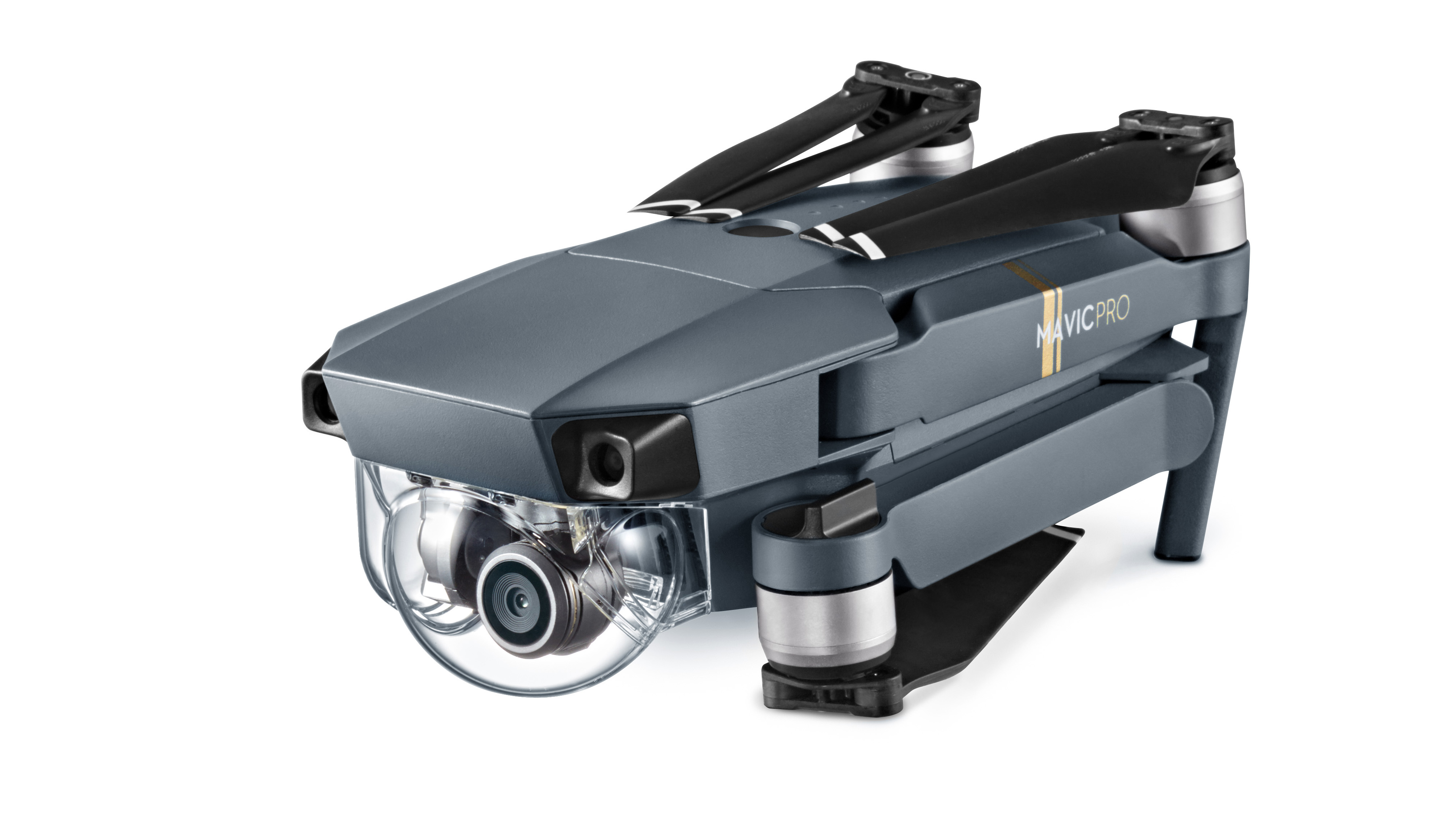The tiny, foldable DJI Mavic Pro is full of drone magic

Hot on the heels of the GoPro Karma drone is the DJI Mavic Pro, a portable drone featuring a built-in 4K video camera.
The Mavic Pro sports a unique folding design that allows it to collapse down to an incredibly compact size, with the four rotor blades tucking into the body when folded away. DJI claims it's small enough to chuck in a bag or backpack (though we're not sure what size bag as DJI haven't shared the dimensions with us just yet), with the whole system taking less than a minute to set-up and be airborne.

Range and time
The completely new air frame when paired with DJI's propulsion and battery system allows the Mavic Pro to fly for up to 27 minutes, while it can zip along at speeds up to 40mph.
To help capture smooth video footage, the Mavic Pro should remain stable in winds up to 24mph, while DJI's geofencing system can identify restricted areas to avoid you encroaching on areas that will cause safety or security concerns.
Just like other DJI drones, the Mavic Pro will automatically return to its launch location should it ever lose contact with the controller or runs low on power. To avoid embarrassing crash landings, the Mavic Pro records the take off with two cameras, then uses this information along with GPS data to ensure it lands within an inch from where it left.
Camera system
The Mavic Pro features DJI's smallest-ever three-axis gimbal that DJI believes will deliver shake-free videos and photos. The autofocus camera at the end of the gimbal offers a minimum focusing distance of 19-inches (0.5m) and can also be flipped 90 degrees for portrait format capture, though we'd avoid shooting video in this way unless you want annoying black bars either side of your video when you play it back.

Capable of shooting 4K footage at 30fps, it can also capture 1080p full HD video at 96fps, meaning it should be possible to record some relatively slow-motion footage. For stills, there's a 12MP camera that can output raw files in Adobe's DNG format, allowing you to draw out the most detail possible from the files. DJI also believe that thanks to the high precision of the gimbal, users should be able to shoot 2-second long exposures that has the potential to produce some really striking results.
Sign up for breaking news, reviews, opinion, top tech deals, and more.

Taking control
The Mavic Pro also comes with a new remote controller that can accommodate a smartphone or be used to control the drone on its own, with a host of dedicated buttons.
There's a built-in LCD screen that displays a range of data, while the Mavic Pro's video link system, OcuSync, supports a range of 4.3 miles with Live View resolutions being fed back from the drone of up to 1080p.
Alternatively, the Mavic Pro can also be controlled via your phone's touchscreen using the TapFly app, with the advanced hardware and software in the Mavic Pro making it possible to take control of it with gestures.

There's an updated version of DJI's ActiveTrack that recognizes common subjects such as people, bicyclists, cars, boats and animals, which you can then use to set the Mavic Pro to follow behind, lead in front, circle above or track alongside the subject. This sees the Mavic Pro keeping the camera focused on your chosen subject while you cover the rest of the controls and navigation.
Pricing for the DJI Mavic Pro starts at $749 for just the drone by itself, meanwhile, getting the drone with the remote control is priced at 1,199 or $999, which roughly works out to £1,033 or AU$1,750. Lastly, DJI is also offering a bundle that includes the drone, remote control and two space batteries for $1,299.
Shipping is expected to start on October 15 and it will arrive to Apple Stores starting November 2.

DJI Goggles
In a last surprise announcement, DJI introduced a pair of Googles that allow the users to see everything the drone does as if they were sitting on its front lip. The built-in 1080p screen display an 85-degree view directly from the drone rather than through the controller thanks to OcuSync.
As of this writing, DJI has not announced pricing and release date information.

Phil Hall is an experienced writer and editor having worked on some of the largest photography magazines in the UK, and now edit the photography channel of TechRadar, the UK's biggest tech website and one of the largest in the world. He has also worked on numerous commercial projects, including working with manufacturers like Nikon and Fujifilm on bespoke printed and online camera guides, as well as writing technique blogs and copy for the John Lewis Technology guide.